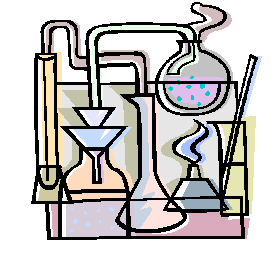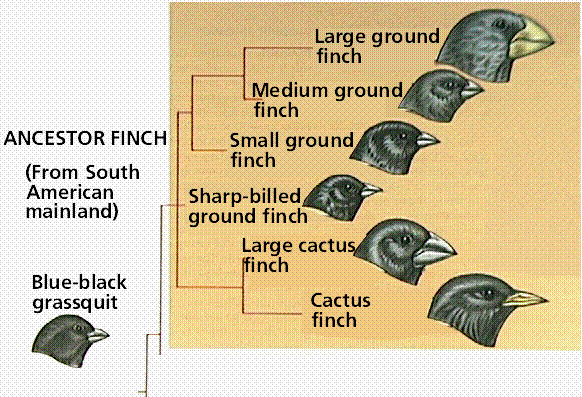| Laboratory |
Home |
Lecture |
 |
 |
Cell Theory: Cells are the basic units of life. They are the building blocks of all organisms, from bacteria to animals. Cells are thought to be the units for life. This is stated in the cell theory. The cell theory is as follows:
1. All living things are composed of one or more cells.
2. Cells are organisms' basic units of structure and function.
3. Cells come only from existing cells.
This theory was developed from three German scientist's discoveries. They are Matthias Schleiden, Theodor Schwann, and Rudolph Virchow.
In 1838 the German Botanist Matthias Schleiden discovered that all plants were composed of cells. Then only a year later a German zoologist discovered the all animals were composed of cells. Later in 1855 a German physician named Rudolph Virchow was doing experiments with diseases when he found that all cells come from other existing cells.
Cells of themselves of course were discovered much earlier. The first person to see a cell was Hooke. He used a very primitive microscope, but when he was looking at cork cells under the micro scope he saw cells for the first time. The shape of the cells reminded him of the monk monastaries and then dubded them "cells."
The first person to see living cells was Van Leeuwenhoek, a microscope builder.
Resources:General Overview, Study Cells Tutorial w/Quiz
Homeostasis: Homeostasis is one of the most remarkable and most typical properties of highly complex open systems. A homeostatic system (an industrial firm, a large organization, a cell) is an open system that maintains its structure and functions by means of a multiplicity of dynamic equilibriums rigorously controlled by interdependent regulation mechanisms. Such a system reacts to every change in the environment, or to every random disturbance, through a series of modifications of equal size and opposite direction to those that created the disturbance. The goal of these modifications is to maintain the internal balances.
How can a stable organization whose goal is to maintain itself and endure be able to change and evolve?
Resources: Homeostasis, Negative Feedback , Positive Feedback ,
Evolution:
"THE AFFINITIES of all the beings of the same class have sometimes been represented by a great tree. I believe this simile largely speaks the truth. The green and budding twigs may represent existing species; and those produced during each former year may represent the long succession of extinct species . . . The limbs divided into great branches, and these into lesser and lesser branches, were themselves once, when the tree was small, budding twigs; and this connexion of the former and present buds by ramifying branches may well represent the classification of all extinct and living species in groups subordinate to groups . . . From the first growth of the tree, many a limb and branch has decayed and dropped off, and these lost branches of various sizes may represent those whole orders, families, and genera which have now no living representatives, and which are known to us only from having been found in a fossil state . . . As buds give rise by growth to fresh buds, and these, if vigorous, branch out and overtop on all a feebler branch, so by generation I believe it has been with the Tree of Life, which fills with its dead and broken branches the crust of the earth, and covers the surface with its ever branching and beautiful ramifications" (Darwin, 1859).
The theory of evolution, formalized by Charles Darwin, is as much theory as is the theory of gravity, or the theory of relativity. Unlike theories of physics, biological theories, and especially evolution, have been argued long and hard in socio-political arenas. Even today, evolution is not often taught in primary schools. However, evolution is the binding force of all biological research. It is the unifying theme. In paleontology, evolution gives workers a powerful way to organize the remains of past life and better understand the one history of life. The history of thought about evolution in general and paleontological contributions specifically are often useful to the workers of today. Science, like any iterative process, draws heavily from its history.
What did Charles Darwin see? Divergence of the Galapagos finches from ancestral colonizers from the South American mainland. Finches on the Galápagos Islands resembled a mainland finch but there were more types. Galápagos finch species varied by nesting site, beak size, and eating habits. One unusual finch used a twig or thorn to pry out insects, a job normally done by a woodpecker. The finches posed questions to Darwin: did they descend from one mainland ancestor, did islands allow isolated populations to evolve independently, and could present-day species have resulted from changes occurring in each isolated population.

Resources: Evolution (PBS website), Frequently asked Questions (FAQs), Human Evolution Resources
***************************************
Life can be studied as a hierarchical structure. The structure of living organisms including those of entire populations and ecosystems is organized in a hierarchical fashion that allows a systematic exploration of the question ‘What is life?’. In the biological sciences, the following structural levels are recognized:
Level |
Examples |
Special consideration |
| Ecosystem | Rain forest, desert, fresh water lake, digestive tract of animal for bacteria | Includes all living organisms and non living matter such as air, water and minerals |
| Community | All species in an ecosystem | Only includes living things from bacteria, to fungi, to plant to animal |
| Population | All individuals of a single species | Includes only individuals from a specific species such as a plant, an animal, a bacterial colony |
| Organism | One single individual | Serves as a representative of the species and describes overall form and function of an organism |
| Organ system | A specialized functional system of an organism |
The nervous system or immune system of an animal |
| Organ | A specialized structural system of an organism | The brain or the thymus of an animal |
| Tissue | A specialized substructure of an organ | The nervous tissue and epithelial tissue are both part of the brain |
| Cell | A single cell - smallest living unit | A neuron, a skin cell, a root cell, bacteria, yeast, paramecium |
| Molecule | A single large or small molecule such as a protein, DNA, sugar or fatty acid | Molecules are the smallest part of biological systems; they can be studied for their chemical, physical properties, but are of particular interest for their usefulness in biological systems. |
In this hierarchical organization, each higher level exists only with all lower levels intact (single celled organism don’t include tissue and organ levels). Importantly, each higher level provides novel (emerging) properties not found at any lower level, an important feature of hierarchical systems. This phenomenon is known as ‘the whole is more than the sum of its parts’.
Lower level disturbances or changes affect higher level properties. This hierarchical model is well suited to explain the cause of diseases and the mechanism of evolution. The latter depends on random mutations occurring at the DNA level affecting higher order properties at the cellular and organism level.
